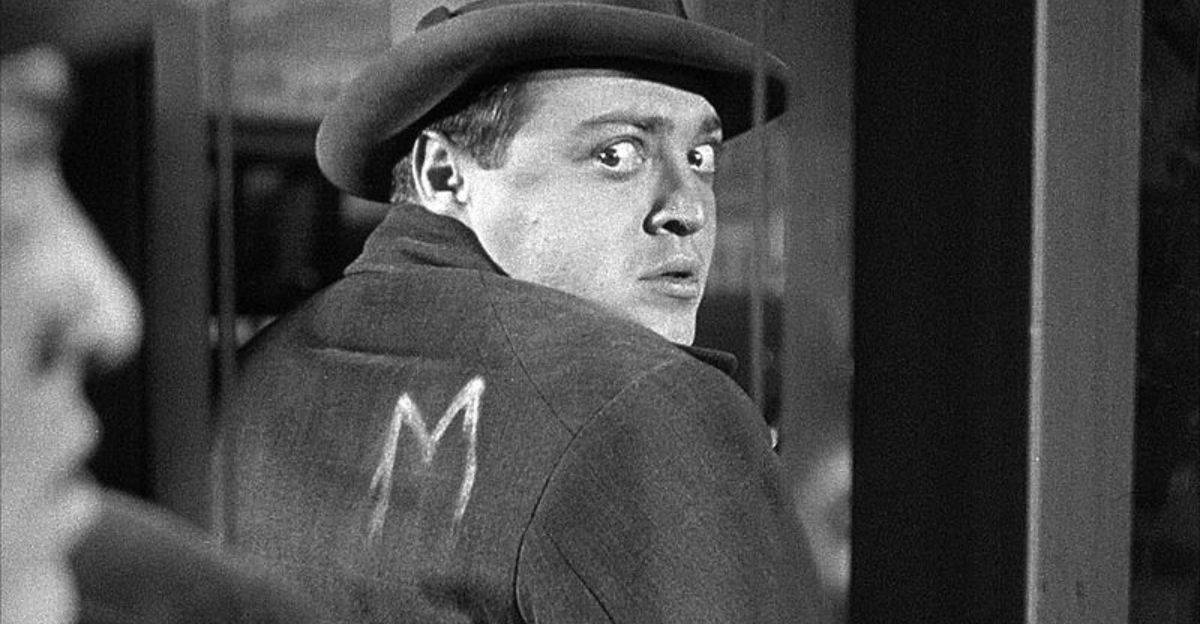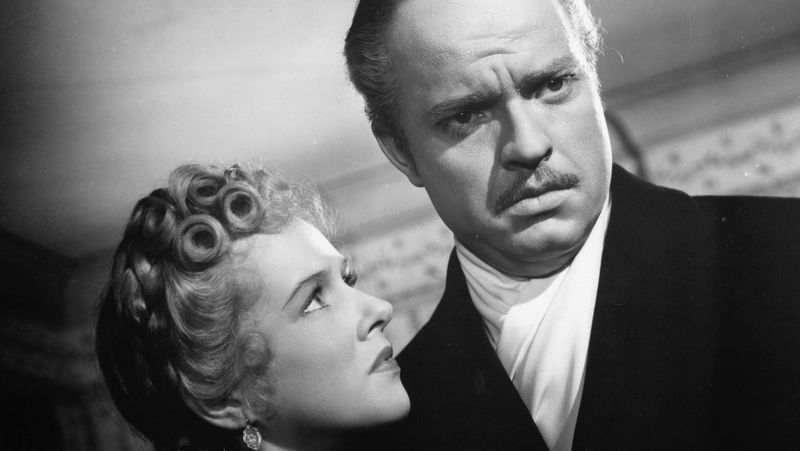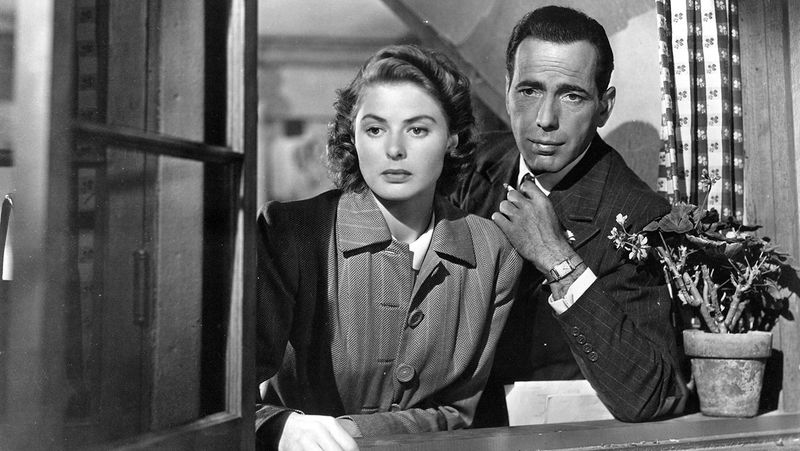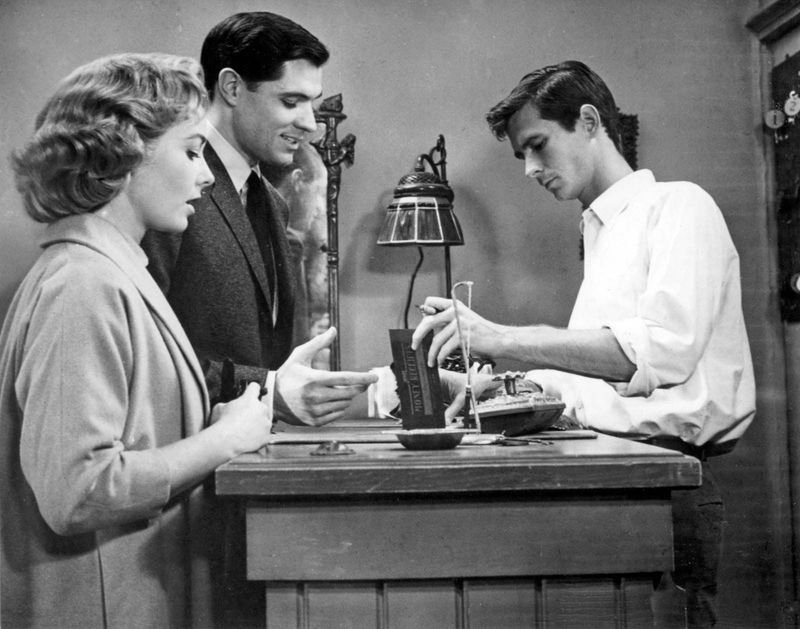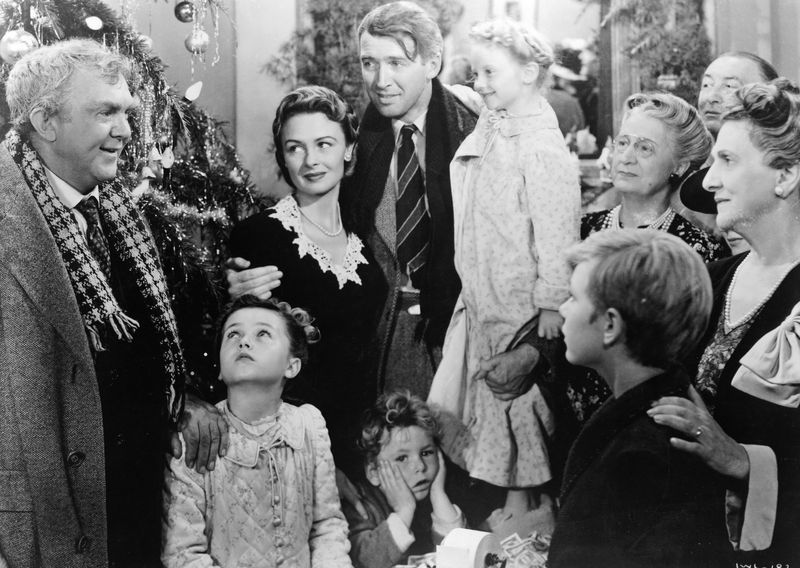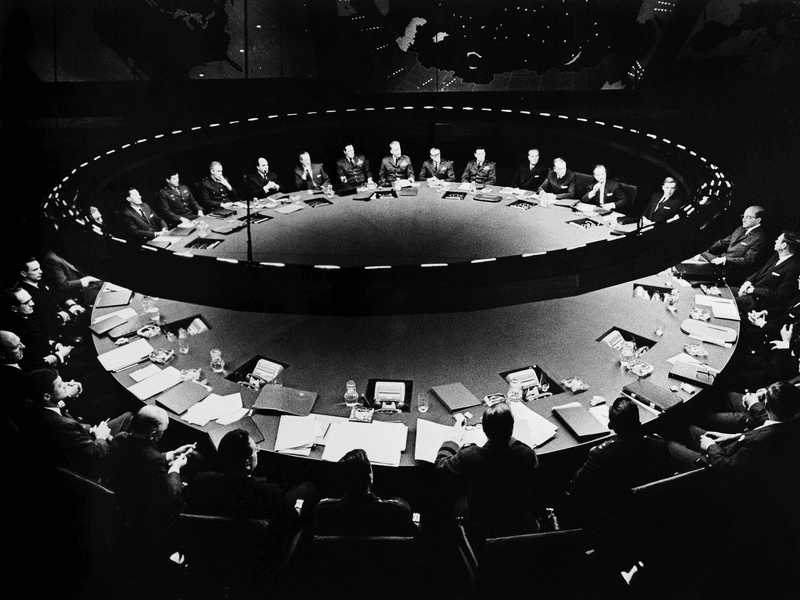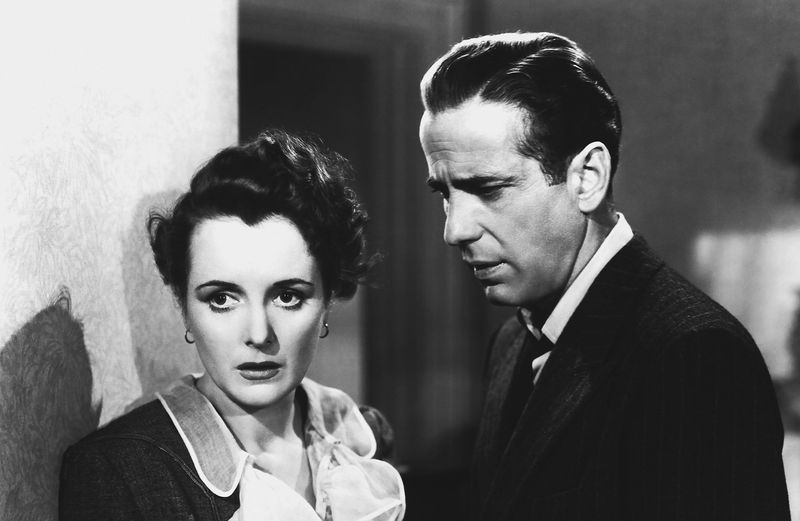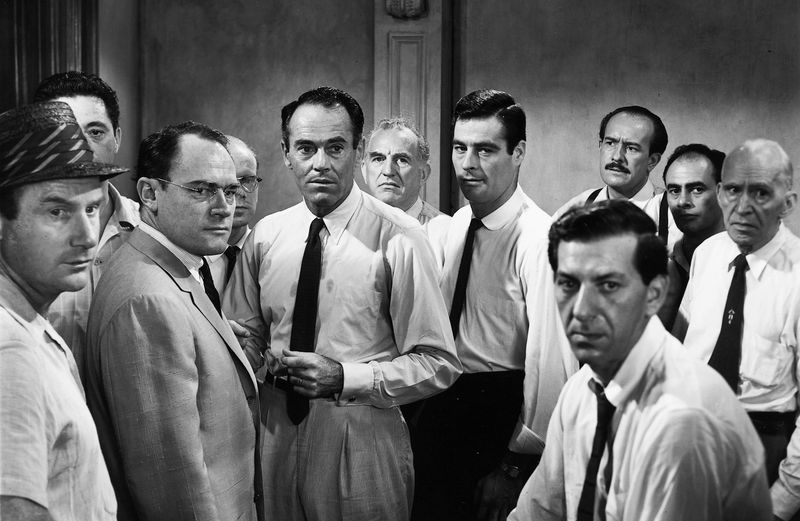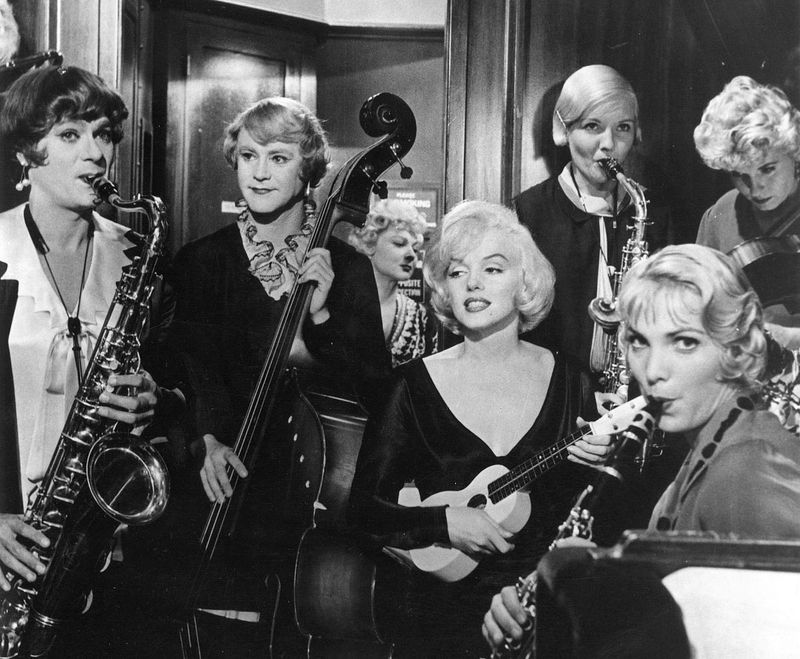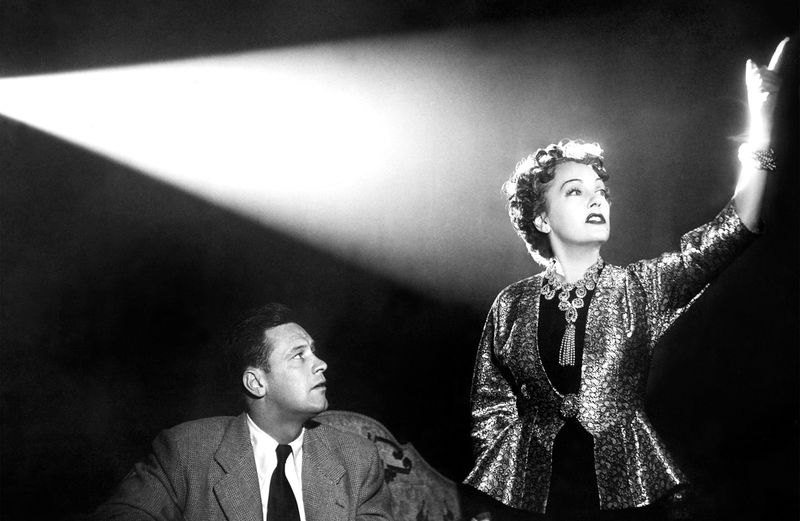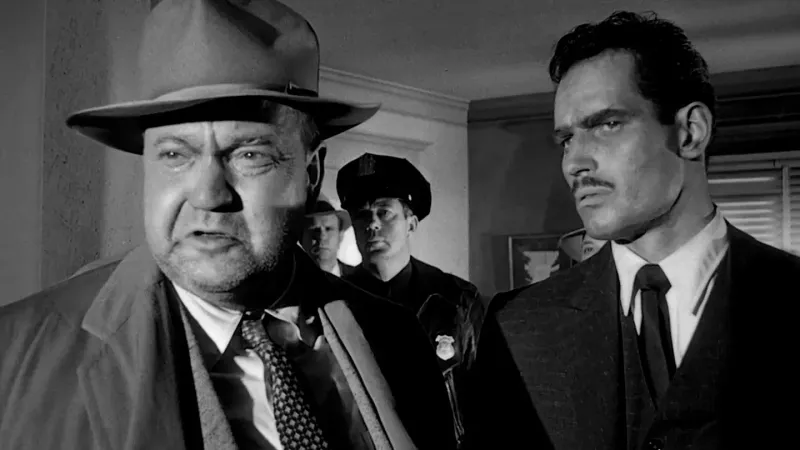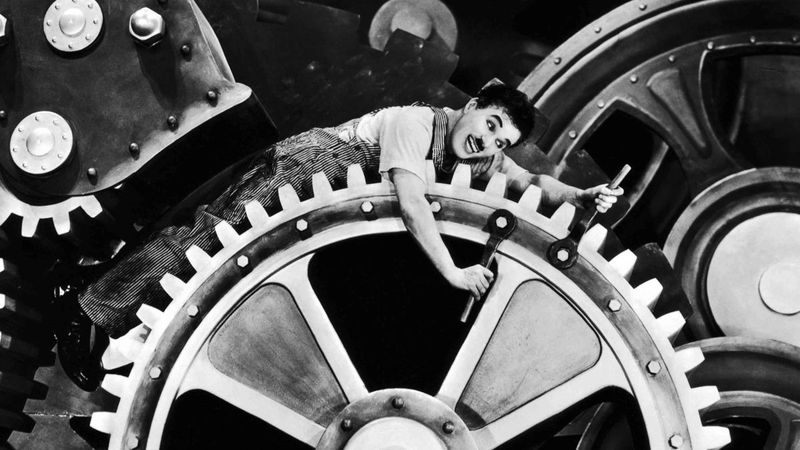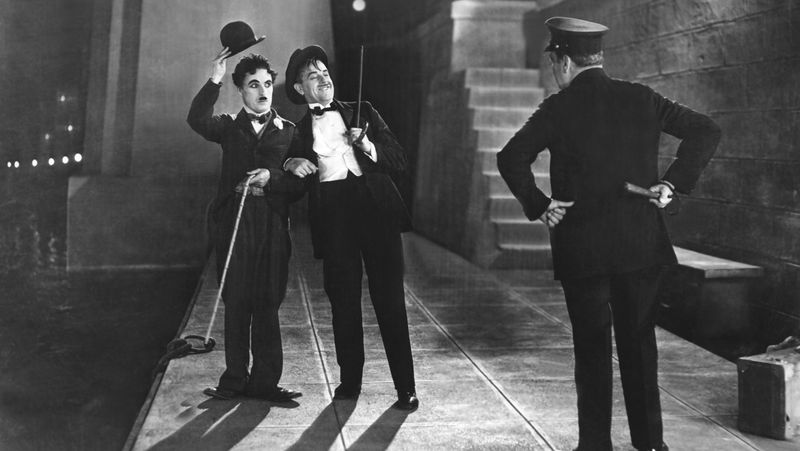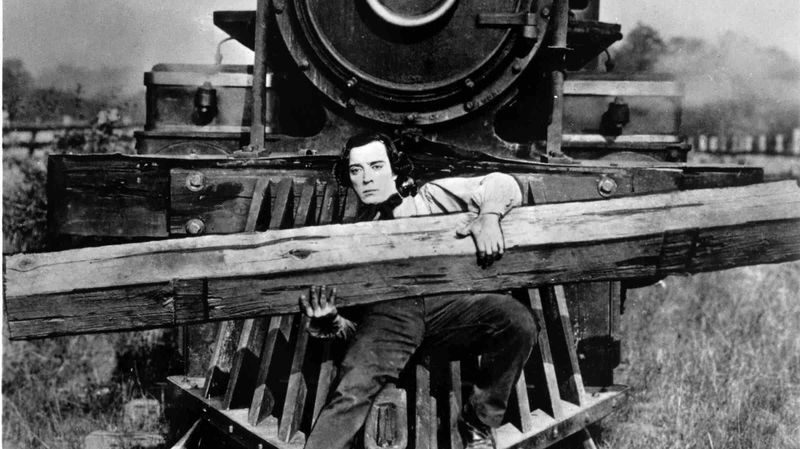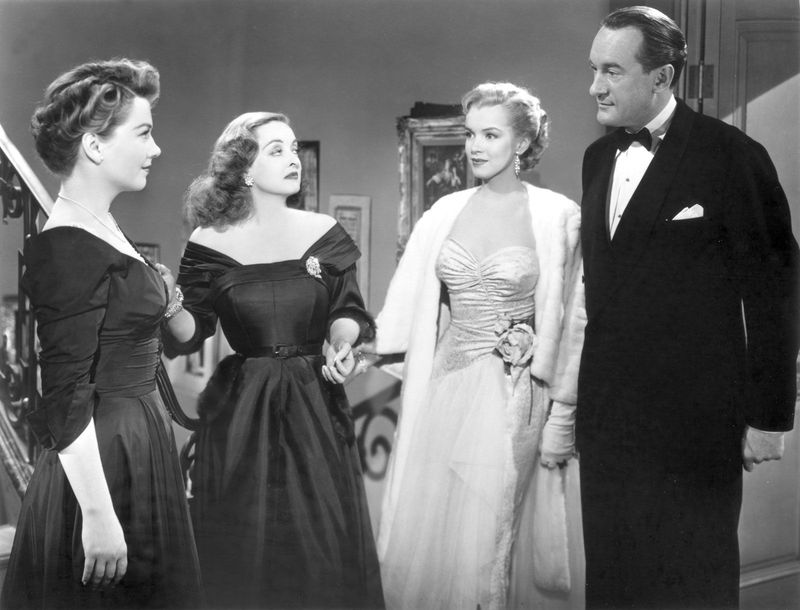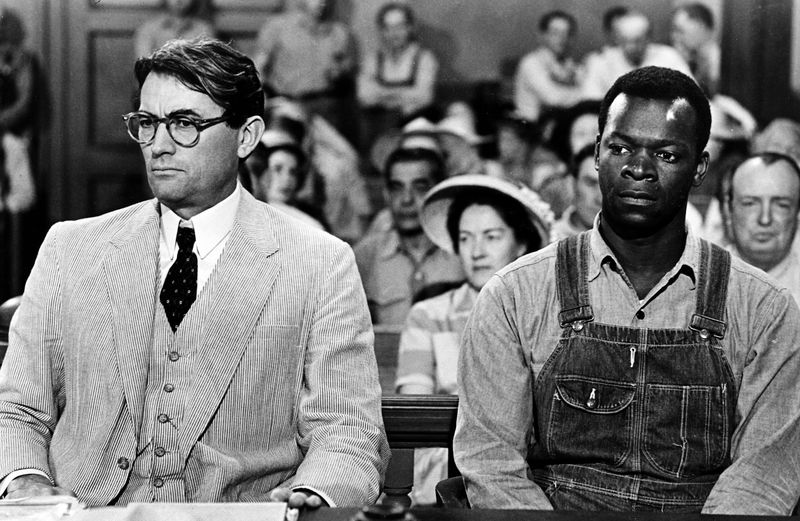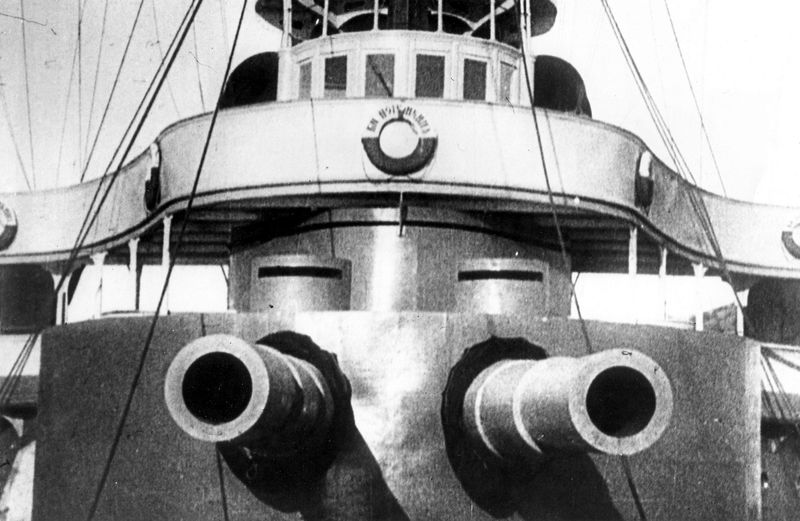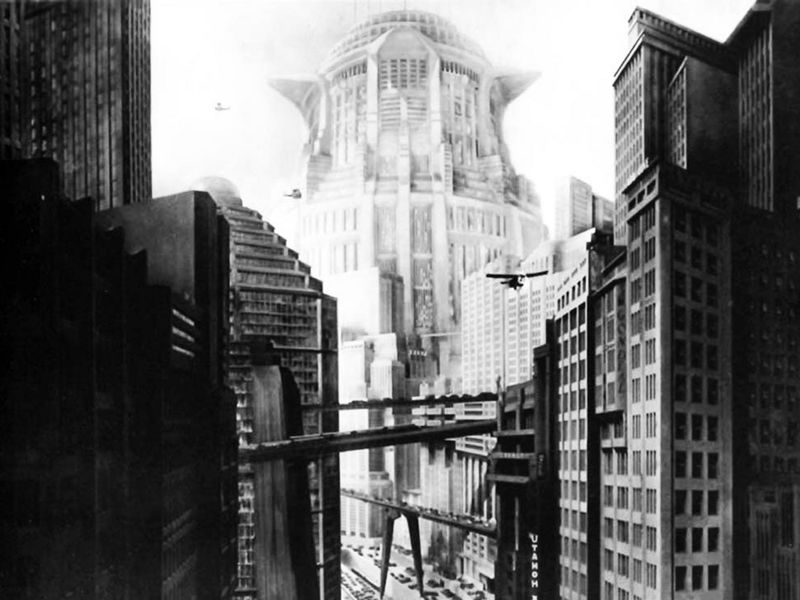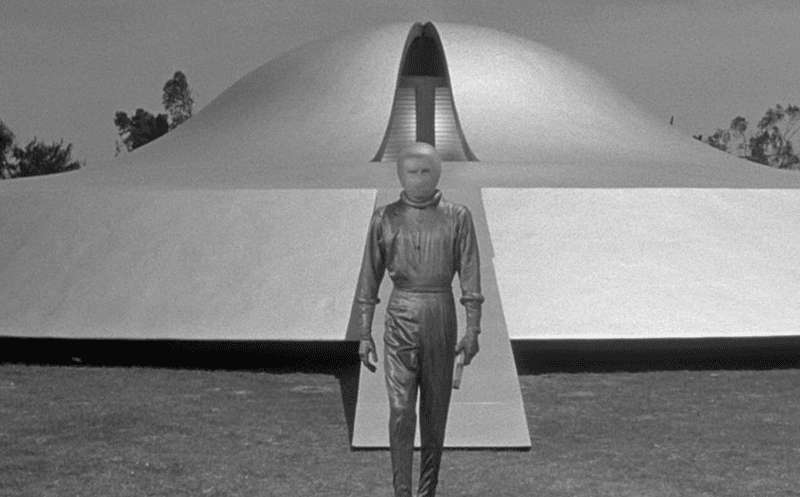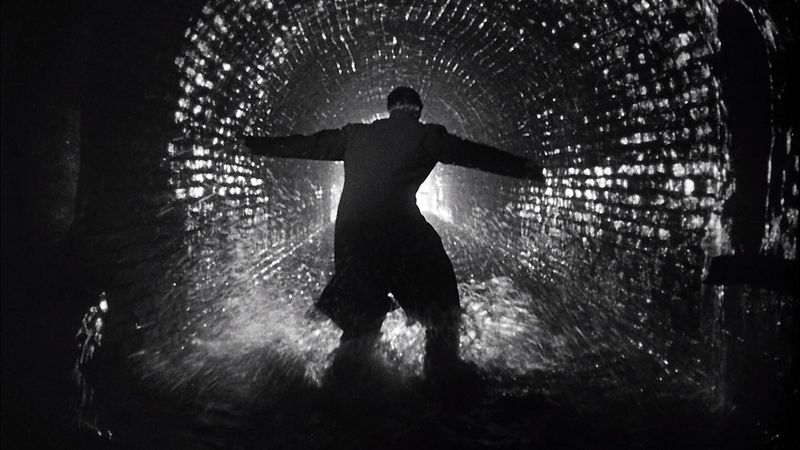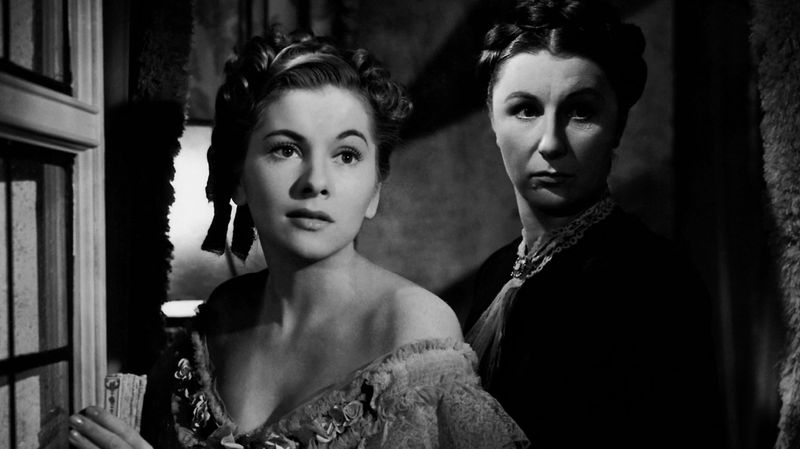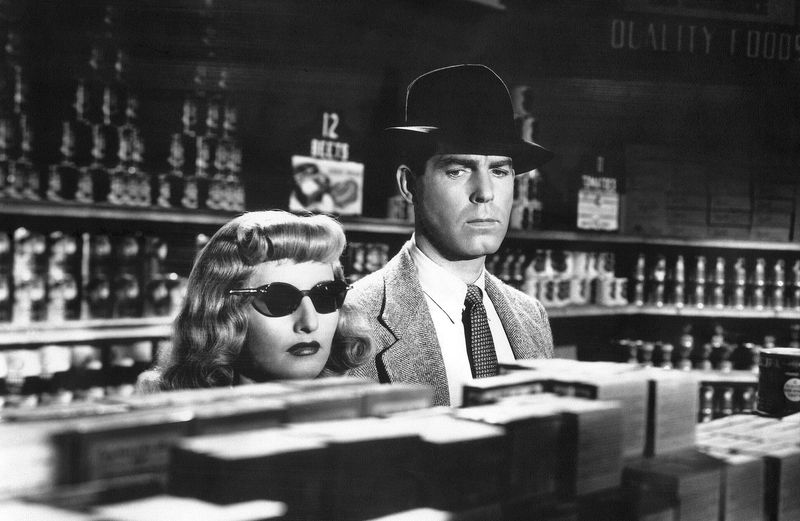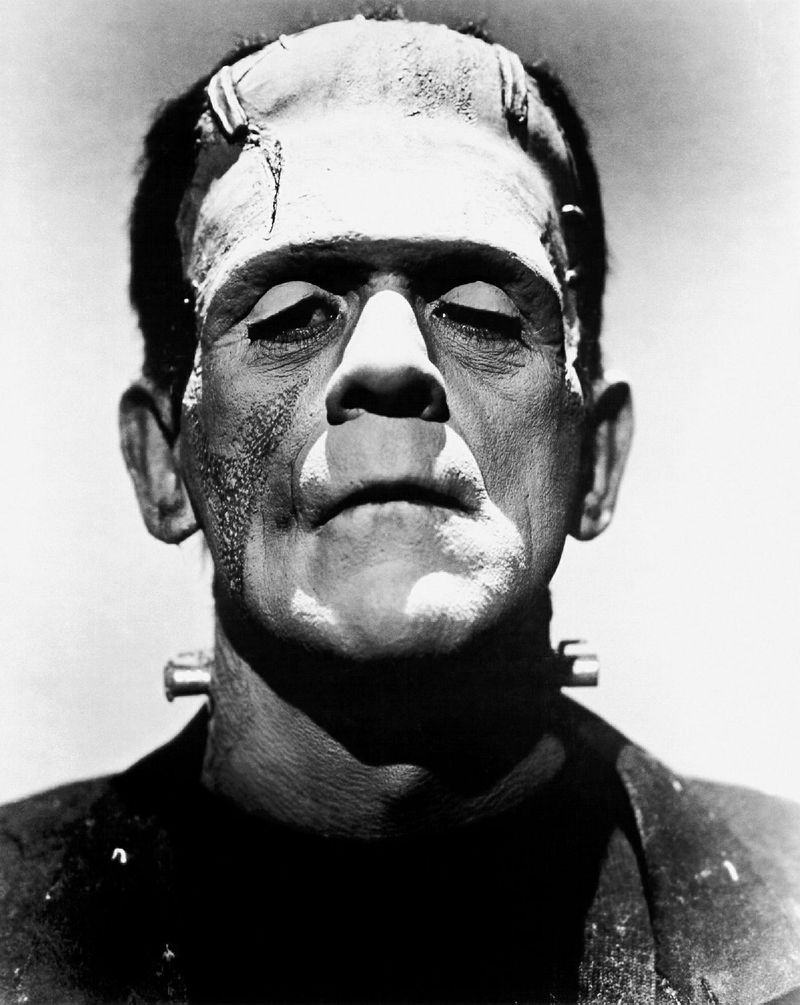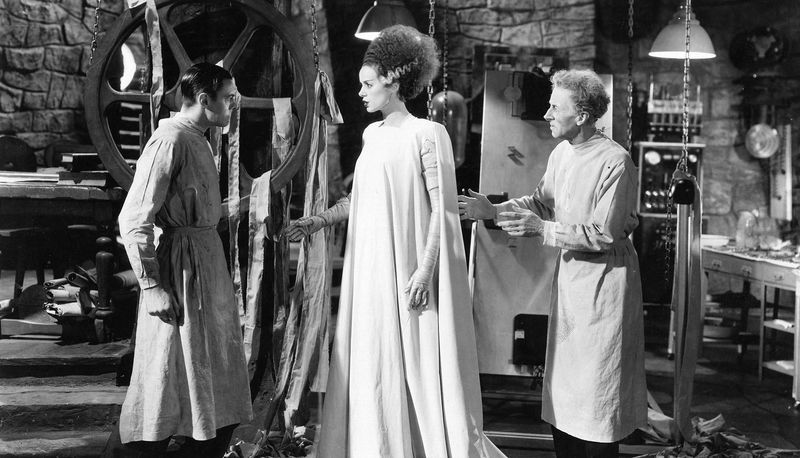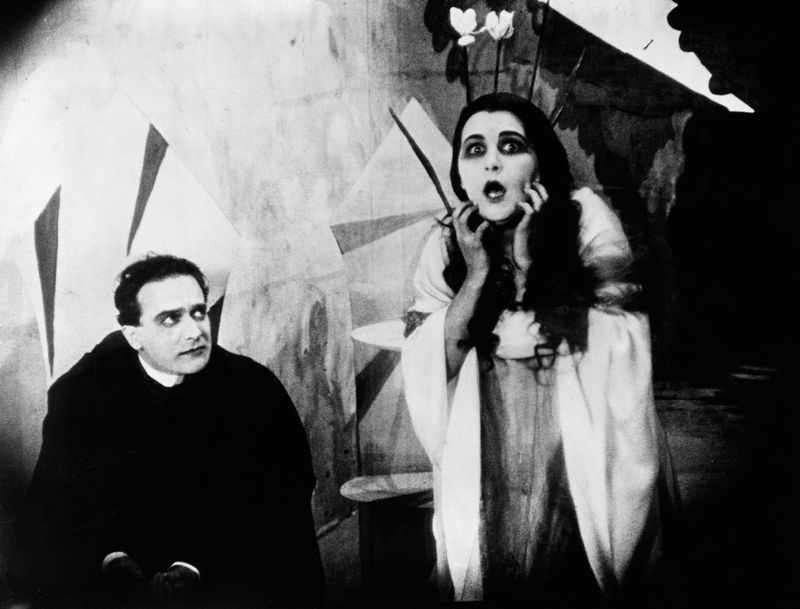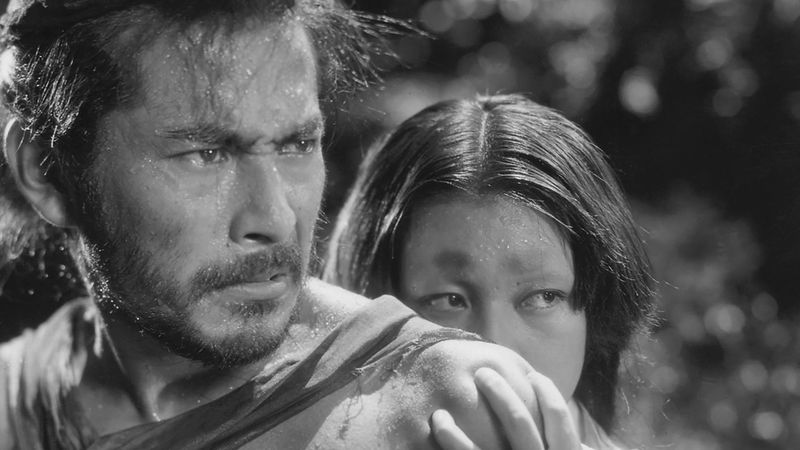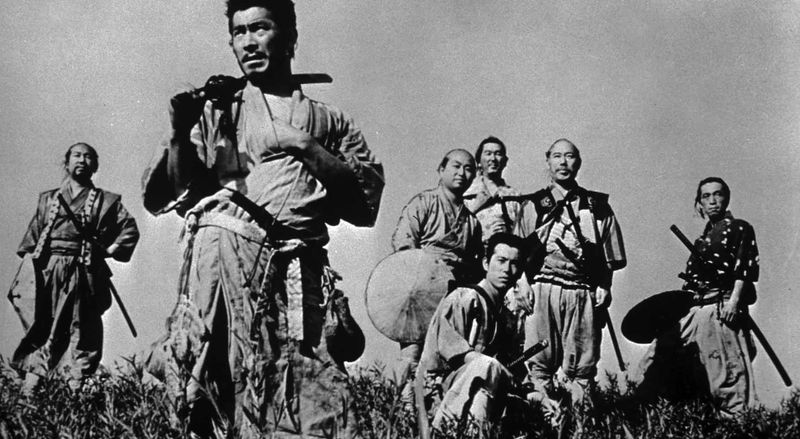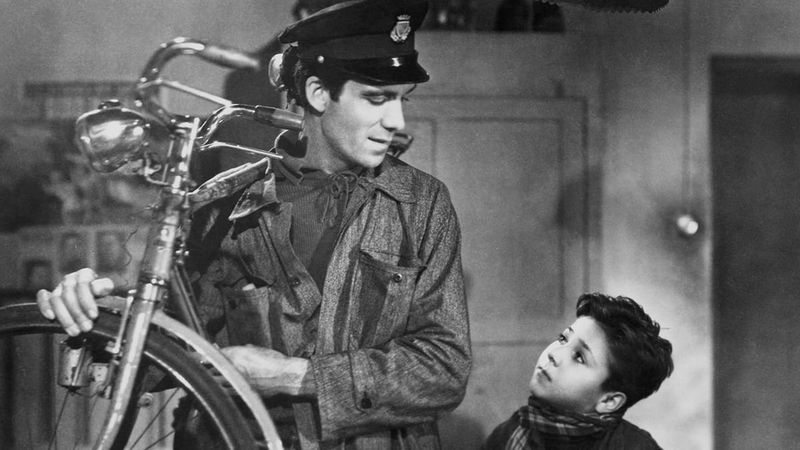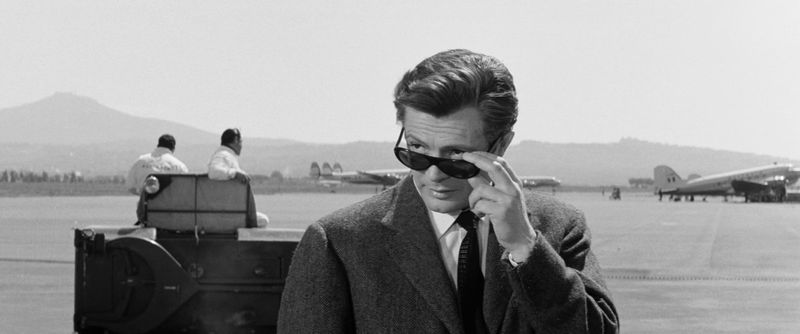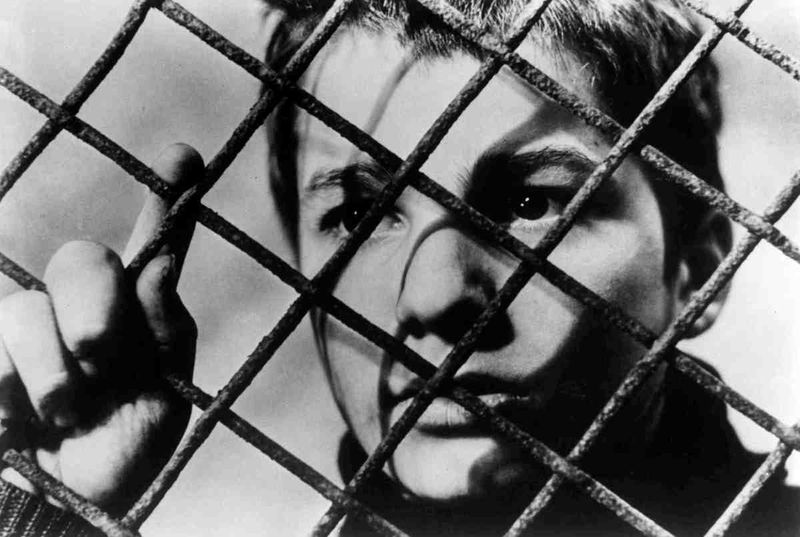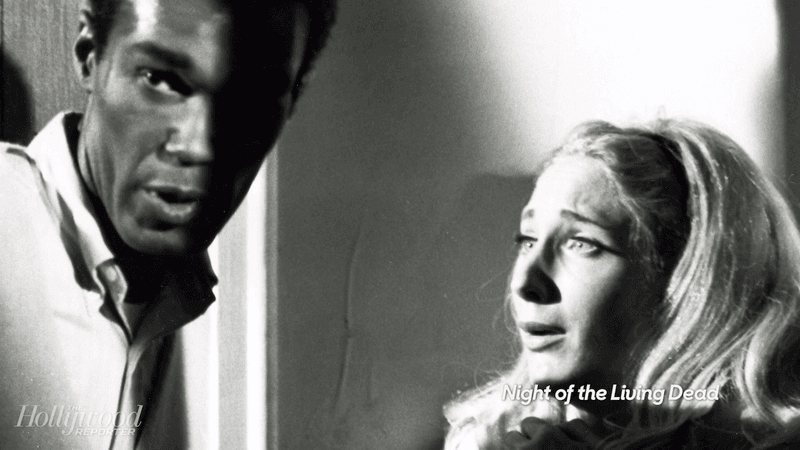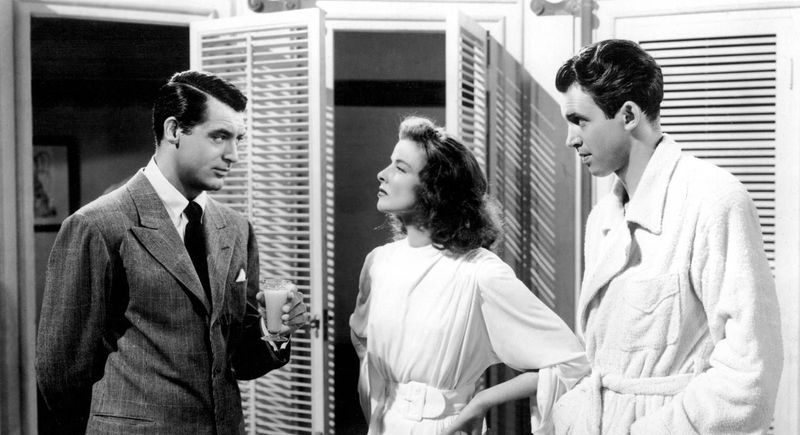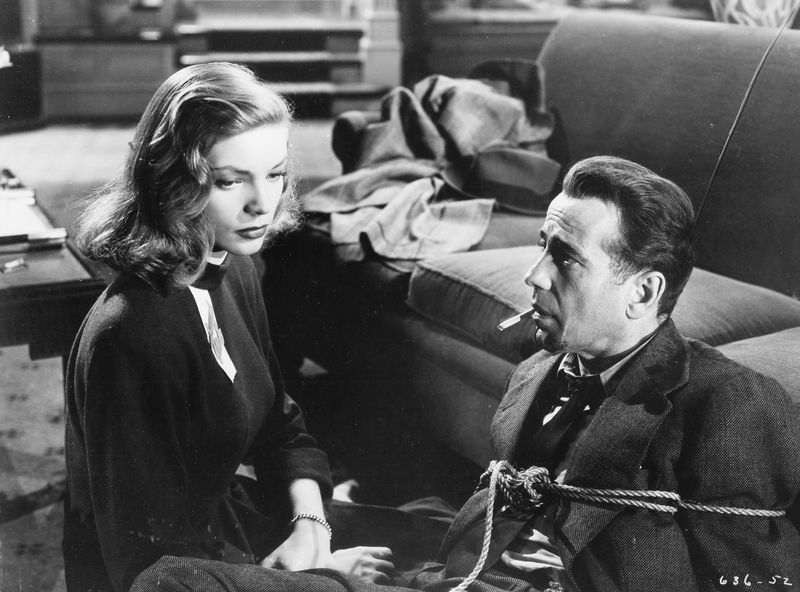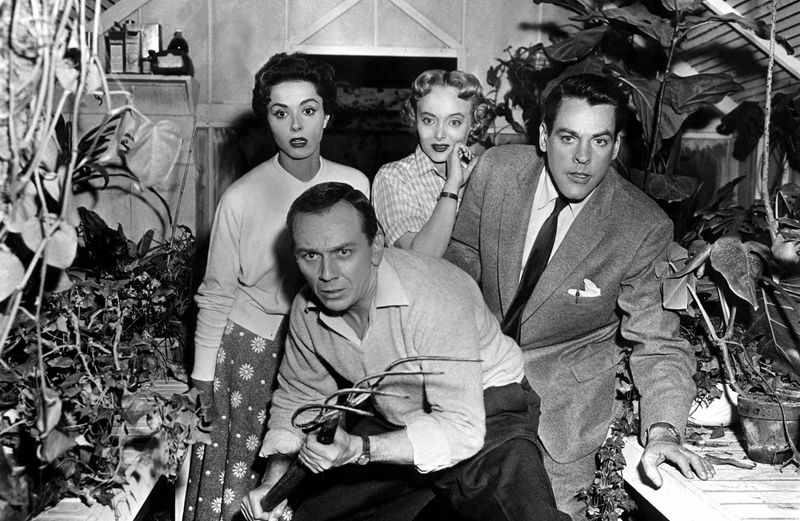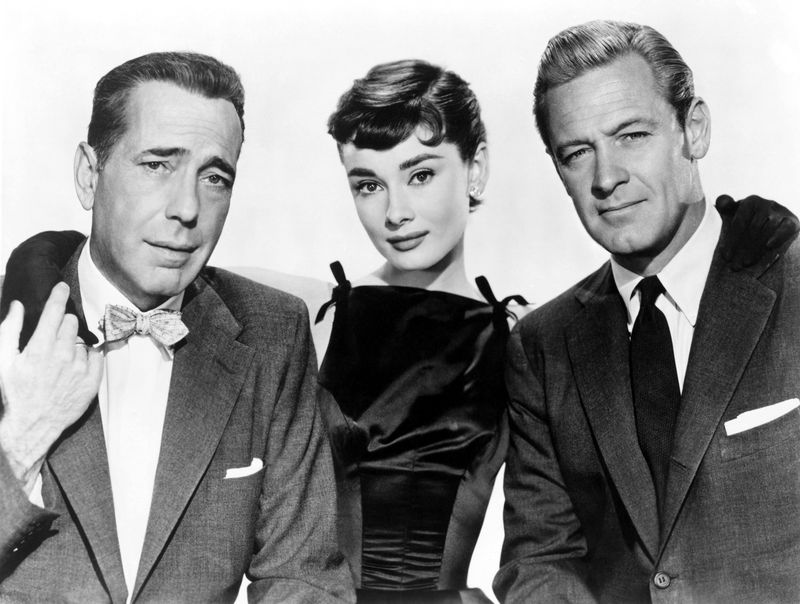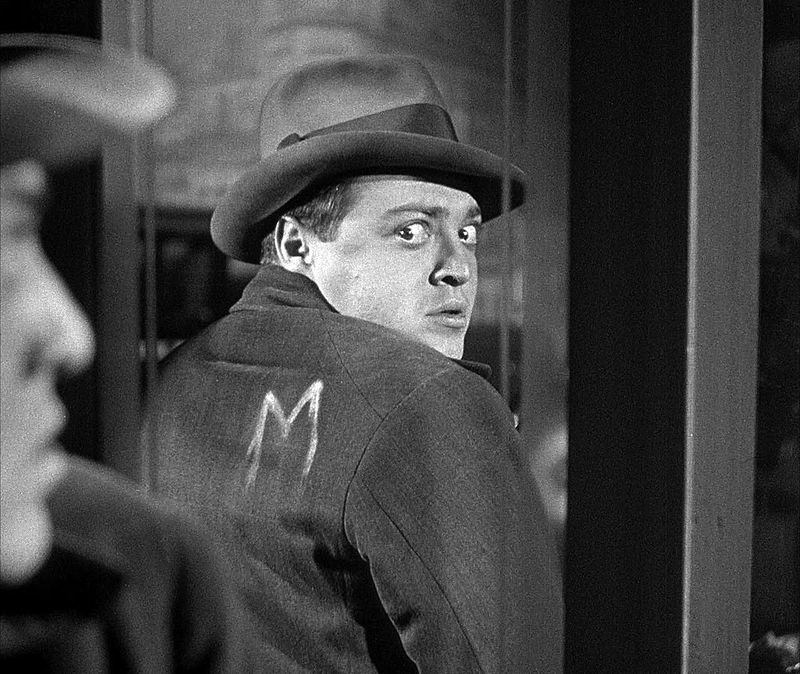Black-and-white cinema holds a timeless allure, offering a glimpse into the rich history of filmmaking. These classics, spanning multiple genres and styles, continue to captivate audiences with their storytelling, innovation, and artistry.
From gripping dramas to groundbreaking sci-fi and horror, these films are essential viewing for anyone who appreciates the magic of movies. Here are 35 must-watch black-and-white films that have stood the test of time.
1. Citizen Kane (1941)
Orson Welles’s groundbreaking drama, Citizen Kane, revolves around the enigmatic life of Charles Foster Kane, a wealthy media magnate. The film explores themes of power and memory, wrapped in a narrative that redefined cinematic storytelling. Welles’s innovative techniques, like deep focus and non-linear storytelling, make this a must-watch.
The movie dives into the complexities of ambition, examining Kane’s rise and fall. Its influence on cinema is immense, often hailed as one of the greatest films of all time. The enigmatic ‘Rosebud’ has intrigued audiences for decades, making Citizen Kane a pillar of classic cinema.
2. Casablanca (1942)
Casablanca, set during World War II, is a timeless romance starring Humphrey Bogart and Ingrid Bergman. The film captures the essence of love and sacrifice in a war-torn world. Its memorable quotes and iconic scenes have left an indelible mark on cinema history.
The chemistry between Bogart and Bergman is palpable, elevating the film to legendary status. Set against the exotic backdrop of Morocco, Casablanca’s plot intertwines politics and personal dilemmas. This classic remains a beloved piece of film history, with its themes of love, loss, and resilience resonating across generations.
3. Psycho (1960)
Alfred Hitchcock’s Psycho is an iconic thriller that changed the horror genre forever. The film’s suspenseful narrative and shocking twists keep viewers on edge. Hitchcock’s masterful direction creates an atmosphere of tension and dread that permeates every scene.
The infamous shower scene is a pinnacle of cinematic horror, emphasizing the film’s psychological depth. Anthony Perkins delivers a chilling performance as Norman Bates, whose complexities add layers to the story. Psycho’s influence extends beyond horror, impacting popular culture and cementing its place as a masterpiece of suspense.
4. It’s a Wonderful Life (1946)
Frank Capra’s It’s a Wonderful Life is a heartwarming holiday staple, exploring themes of hope and resilience. Starring James Stewart as George Bailey, the film portrays a man’s journey through life’s challenges and his ultimate realization of his own worth.
The story unfolds in the fictional town of Bedford Falls, where Bailey’s selflessness touches the lives of many. As a beloved Christmas classic, the film highlights the importance of community and kindness. Its enduring message continues to inspire viewers, making it an essential watch during the holiday season.
5. Dr. Strangelove (1964)
Stanley Kubrick’s Dr. Strangelove is a satirical take on the absurdities of nuclear war. The film is loaded with pitch-black humor and unforgettable performances, particularly from Peter Sellers, who plays multiple roles with finesse.
Set during the height of the Cold War, Dr. Strangelove explores the irrational nature of human conflict. Kubrick’s direction imbues the film with sharp wit and biting commentary on political and military power.
Its satirical edge remains influential, reflecting the era’s anxieties and showcasing the dark humor underlying global tensions.
6. The Maltese Falcon (1941)
The Maltese Falcon, directed by John Huston, is a quintessential film noir that defined the genre. Starring Humphrey Bogart as the hard-boiled detective Sam Spade, the film weaves a tale of treachery and greed.
The film’s intricate plot keeps audiences guessing, with Bogart delivering a performance filled with grit and charisma. The mysterious allure of the falcon statuette drives the narrative, highlighting themes of betrayal and moral ambiguity.
This classic remains an essential viewing for noir enthusiasts, showcasing the genre’s signature style and storytelling.
7. 12 Angry Men (1957)
12 Angry Men is a taut courtroom drama that unfolds in a single room, spotlighting prejudice, justice, and the power of persuasion. Henry Fonda leads an ensemble cast, delivering a gripping performance as a juror advocating for a fair trial.
The film’s minimalist setting enhances the intensity of the debate, showcasing the actors’ powerful performances. It delves into the dynamics of group decision-making and moral responsibility.
With its tight script and compelling dialogue, 12 Angry Men remains a powerful exploration of justice and human nature.
8. Some Like It Hot (1959)
Billy Wilder’s Some Like It Hot is a classic comedy featuring Marilyn Monroe, Tony Curtis, and Jack Lemmon. The film is a gender-bending farce, known for its witty dialogue and comedic brilliance.
Set during the Prohibition era, the story follows two musicians who disguise themselves as women to escape from gangsters. Monroe’s charismatic performance adds to the film’s charm, creating hilarious situations and unforgettable moments.
Its exploration of identity and societal norms, coupled with a humorous script, has cemented its status as a beloved comedy classic.
9. Sunset Boulevard (1950)
Sunset Boulevard is a dark tale of faded stardom and obsession, led by Gloria Swanson’s unforgettable performance as Norma Desmond. The film explores the darker side of Hollywood, where dreams collide with harsh realities.
Directed by Billy Wilder, the film paints a portrait of delusion and ambition, capturing the perils of fame. Its haunting imagery and sharp dialogue have earned it a place among cinema’s greats.
Swanson’s portrayal of Desmond’s descent into madness is both poignant and chilling, making Sunset Boulevard a compelling study of human fragility.
10. Touch of Evil (1958)
Orson Welles’ Touch of Evil is a sinister story of crime and corruption set at the U.S.-Mexico border. Known for its iconic opening shot, the film is a masterclass in suspense and visual storytelling.
Welles plays a corrupt police captain, whose actions unravel a web of deceit and moral ambiguity. The film’s atmospheric cinematography and complex characters contribute to its status as a noir classic.
Touch of Evil challenges viewers with its themes of justice and corruption, remaining a significant work in the film noir canon.
11. Modern Times (1936)
Charlie Chaplin’s Modern Times is a comedic critique of industrialization and the dehumanizing effects of the machine age. As the Tramp, Chaplin navigates a world dominated by technology, using humor to highlight societal issues.
The film combines slapstick comedy with a poignant message about the human condition, reflecting on the impacts of modernization. Its innovative use of sound and visual gags showcases Chaplin’s genius in blending humor with social commentary.
Modern Times remains a timeless and relevant exploration of the struggles faced in a rapidly changing world.
12. City Lights (1931)
City Lights is another Chaplin masterpiece, blending silent comedy with poignant romance. The film follows the Tramp’s efforts to help a blind flower girl, offering a beautiful mix of humor and emotion.
With its iconic final scene, City Lights captures the essence of human connection and compassion. Chaplin’s performance is both comedic and heartfelt, making the film a standout in his illustrious career.
The film’s balance of lightheartedness and pathos continues to resonate with audiences, ensuring its place as a classic in silent cinema.
13. The General (1926)
Buster Keaton’s silent-era classic, The General, features jaw-dropping train stunts and deadpan humor. Set during the American Civil War, the film showcases Keaton’s exceptional physical comedy and innovative visual storytelling.
Keaton’s character embarks on a chase to retrieve his beloved locomotive, leading to a series of thrilling and humorous sequences. The film’s action and slapstick blend seamlessly, highlighting Keaton’s talents as a filmmaker and performer.
The General remains a testament to the creativity and ingenuity of silent cinema, captivating audiences with its timeless charm.
14. All About Eve (1950)
All About Eve is a ruthless portrait of ambition and backstabbing in the theater world. Starring Bette Davis as Margo Channing, the film delves into the complexities of fame and envy.
Joseph L. Mankiewicz’s sharp script and direction create a captivating drama filled with wit and tension. The story unfolds as an aspiring actress insinuates herself into Margo’s life, leading to a battle of wills.
All About Eve’s exploration of ambition and identity has left a lasting impact on the industry, making it an essential watch for drama enthusiasts.
15. To Kill a Mockingbird (1962)
To Kill a Mockingbird, adapted from Harper Lee’s novel, stars Gregory Peck as the principled lawyer Atticus Finch. The film addresses themes of racism and justice in the American South.
Peck’s powerful portrayal of Finch has become iconic, embodying the moral courage and empathy central to the story. The film’s examination of prejudice and innocence is both moving and thought-provoking.
Its timeless message of equality and understanding resonates deeply, securing its place as a significant work in American cinema.
16. Battleship Potemkin (1925)
Sergei Eisenstein’s Battleship Potemkin is a silent Soviet propaganda epic, celebrated for its innovative editing techniques. The film depicts a mutiny on a Russian battleship, highlighting themes of rebellion and class struggle.
The Odessa Steps sequence is particularly renowned for its impactful imagery and dynamic montage. Eisenstein’s use of juxtaposition and symbolism enhances the film’s narrative power.
Battleship Potemkin remains a landmark in film history, influencing countless filmmakers and offering a compelling portrayal of revolutionary fervor.
17. Metropolis (1927)
Fritz Lang’s Metropolis is a visionary sci-fi film set in a dystopian future. The film explores the divide between the wealthy elite and oppressed workers, crafting a narrative of rebellion and hope.
Metropolis is celebrated for its ambitious special effects and grandiose set design, which influenced science fiction for decades. Its exploration of class conflict and technological advancement remains relevant, reflecting societal concerns of the era.
Lang’s masterpiece offers a visually stunning and thought-provoking view of the future, making it a cornerstone of the sci-fi genre.
18. The Day the Earth Stood Still (1951)
The Day the Earth Stood Still is a landmark sci-fi parable about alien visitation and humanity’s capacity for destruction or redemption. Directed by Robert Wise, the film uses its extraterrestrial narrative to comment on Cold War anxieties.
The arrival of an alien visitor challenges Earth’s inhabitants to reconsider their aggressive tendencies. The film’s message of peace and understanding resonates, offering a hopeful perspective amidst global tensions.
Its influence extends beyond sci-fi, serving as a poignant meditation on humanity’s future.
19. The Third Man (1949)
Carol Reed’s The Third Man is a stylish film noir set in post-war Vienna. The film features an unforgettable zither score and a mysterious plot centered around Orson Welles’s character, Harry Lime.
The film’s atmospheric visuals and intricate narrative capture the intrigue of its setting. Welles’s performance as Lime adds depth and enigma, enhancing the story’s suspense.
The Third Man is celebrated for its innovative cinematography and memorable dialogue, making it a defining work in the noir genre.
20. Rebecca (1940)
Alfred Hitchcock’s Rebecca is a moody Gothic romance about a newlywed haunted by her husband’s mysterious first wife. The film’s suspenseful narrative unfolds in a lavish mansion, creating an atmosphere of tension and intrigue.
Laurence Olivier and Joan Fontaine deliver compelling performances, capturing the complexities of love and jealousy. Hitchcock’s direction masterfully builds suspense, making Rebecca a rich exploration of identity and obsession.
Its haunting themes and beautiful cinematography continue to resonate, solidifying its place as a classic in the romance and mystery genre.
21. Double Indemnity (1944)
Double Indemnity, directed by Billy Wilder, is a razor-sharp noir on love, greed, and murder. Starring Barbara Stanwyck and Fred MacMurray, the film captures the tension and duplicity inherent in the genre.
The plot centers around an insurance scam gone wrong, driven by passion and deceit. Wilder’s direction and the film’s taut script create a gripping atmosphere, filled with twists and intrigue.
Double Indemnity remains a defining work in film noir, with its exploration of moral ambiguity leaving a lasting impact.
22. Frankenstein (1931)
Boris Karloff embodies Mary Shelley’s monster in Frankenstein, a Universal horror classic that shaped the genre. The film explores themes of creation and the consequences of playing god.
James Whale’s direction brings a haunting and atmospheric quality to the narrative, with Karloff’s performance adding depth and pathos to the monster. The film’s iconic imagery and innovative special effects have left an indelible mark on horror cinema.
Frankenstein’s exploration of humanity and monstrosity continues to captivate audiences, making it a cornerstone of horror films.
23. Bride of Frankenstein (1935)
James Whale’s Bride of Frankenstein brings camp and pathos to the monster’s quest for a mate, turning it into cinematic legend. This sequel to the original Frankenstein expands on themes of loneliness and acceptance.
Karloff’s portrayal of the monster is layered with emotion, while Elsa Lanchester’s Bride adds a new dimension to the story. The film’s blend of horror and humor offers a unique viewing experience, with Whale’s direction emphasizing its gothic atmosphere.
Bride of Frankenstein stands as a poignant exploration of identity and companionship.
24. The Cabinet of Dr. Caligari (1920)
The Cabinet of Dr. Caligari is a German Expressionist masterpiece of twisted sets and surreal horror. The film’s bold visual style and psychological depth have influenced generations of filmmakers.
Directed by Robert Wiene, the story centers around a nefarious doctor and his somnambulist, creating a chilling atmosphere of suspense and intrigue. Its innovative use of set design and lighting enhances the eerie mood, making it a landmark in cinematic history.
The Cabinet of Dr. Caligari remains a powerful exploration of madness and manipulation.
25. Rashomon (1950)
Akira Kurosawa’s Rashomon is a groundbreaking narrative on subjective truth and conflicting perspectives. The film presents multiple viewpoints of a single incident, exploring the nature of reality and human perception.
Set in a dense forest, the story unfolds through the testimonies of various characters, each offering a different version of events. Kurosawa’s innovative storytelling and visual style have left a profound impact on cinema.
Rashomon’s exploration of truth and ambiguity challenges audiences, making it a timeless piece of world cinema.
26. Seven Samurai (1954)
Seven Samurai, another Kurosawa epic, follows a ragtag band of samurai protecting a village from raiders. The film is tense, human, and influential, renowned for its epic scope and character depth.
Kurosawa’s direction blends action, drama, and emotion, creating a rich tapestry of heroism and sacrifice. The interactions between the samurai and villagers highlight themes of honor and community.
Seven Samurai’s impact on filmmaking is immeasurable, inspiring countless adaptations and capturing the essence of courage and camaraderie.
27. Bicycle Thieves (1948)
Vittorio De Sica’s Bicycle Thieves is a neorealist drama capturing post-war hardship and a father’s desperate quest. The film offers a poignant portrait of poverty and perseverance.
The story follows a father and son navigating the streets of Rome, highlighting their bond amidst adversity. De Sica’s dedication to authenticity and human emotion elevates the film, making it a cornerstone of neorealism.
Bicycle Thieves remains a moving exploration of hope and despair, resonating with audiences for its honesty and depth.
28. La Dolce Vita (1960)
Federico Fellini’s La Dolce Vita explores fame and excess in Rome, featuring Marcello Mastroianni’s iconic performance. The film captures the allure and decadence of celebrity culture.
Mastroianni’s character navigates a world of hedonism and existential longing, reflecting the complexities of modern life. Fellini’s direction creates a visual feast, blending fantasy and reality with skill.
La Dolce Vita’s exploration of identity and social change remains relevant, offering a timeless commentary on the pursuit of happiness.
29. The 400 Blows (1959)
François Truffaut’s The 400 Blows is a coming-of-age film that launched the French New Wave. The story follows a young boy’s troubled life in Paris, capturing the essence of youthful rebellion.
Truffaut’s direction offers a raw and honest portrayal of adolescence, blending realism with emotional depth. The film’s exploration of freedom and alienation resonates with audiences, making it a defining work in world cinema.
The 400 Blows remains a poignant and powerful reflection on the challenges of growing up.
30. Night of the Living Dead (1968)
George A. Romero’s Night of the Living Dead is an independent horror gem that birthed the modern zombie genre. The film’s chilling atmosphere and social commentary make it a standout in horror cinema.
Set in a rural farmhouse, the story unfolds as a group of strangers battles an undead threat, reflecting societal fears and anxieties. Romero’s innovative approach to storytelling and practical effects enhances the film’s impact.
Night of the Living Dead’s lasting influence on horror and pop culture is undeniable, making it a must-watch classic.
31. The Philadelphia Story (1940)
The Philadelphia Story is a sparkling romantic comedy with Cary Grant, Katharine Hepburn, and James Stewart. The film combines humor and charm, following a high-society wedding disrupted by unexpected romance.
Hepburn’s portrayal of a strong-willed socialite adds depth to the lively narrative. The film’s witty dialogue and sophisticated plot have delighted audiences for decades, showcasing the charisma and chemistry of its stars.
The Philadelphia Story remains a beloved classic, celebrated for its timeless humor and engaging performances.
32. The Big Sleep (1946)
The Big Sleep, directed by Howard Hawks, stars Humphrey Bogart and Lauren Bacall in a labyrinthine noir brimming with witty dialogue. The film captures the essence of intrigue and mystery.
The plot revolves around private detective Philip Marlowe as he navigates a complex web of deceit and danger. Bogart’s performance exudes charisma and intelligence, elevating the film’s suspenseful atmosphere.
The Big Sleep’s intricate narrative and memorable interactions make it a standout in the noir genre, offering a thrilling cinematic experience.
33. Invasion of the Body Snatchers (1956)
Invasion of the Body Snatchers is a sci-fi horror film that taps into Cold War paranoia about conformity and alien infiltration. Directed by Don Siegel, the film’s eerie narrative and unsettling atmosphere captivate viewers.
The story unfolds in a small town, where residents are replaced by emotionless duplicates, highlighting themes of identity and fear. The film’s chilling commentary on societal control and loss of individuality resonates strongly.
Invasion of the Body Snatchers remains a powerful exploration of human vulnerability and suspicion.
34. Sabrina (1954)
Sabrina is a lighthearted, stylish romantic comedy starring Audrey Hepburn, Humphrey Bogart, and William Holden. The film explores themes of love and transformation, set against a backdrop of luxury and charm.
Hepburn’s performance as Sabrina, the chauffeur’s daughter, captivates with grace and wit. The film’s engaging narrative and delightful humor have made it a beloved classic in romantic cinema.
Sabrina’s exploration of class dynamics and personal growth continues to enchant audiences, celebrating the magic of romance.
35. M (1931)
M, directed by Fritz Lang, is a gripping crime drama set in a shadowy German city. Starring Peter Lorre, the film delves into themes of guilt and justice, crafting a narrative of suspense and moral complexity.
Lorre’s performance as a tormented criminal adds depth and intensity to the story. Lang’s innovative use of sound and visual style creates a chilling atmosphere, making M a landmark in film history.
The film’s exploration of societal fear and justice challenges audiences, remaining a powerful and influential work.
